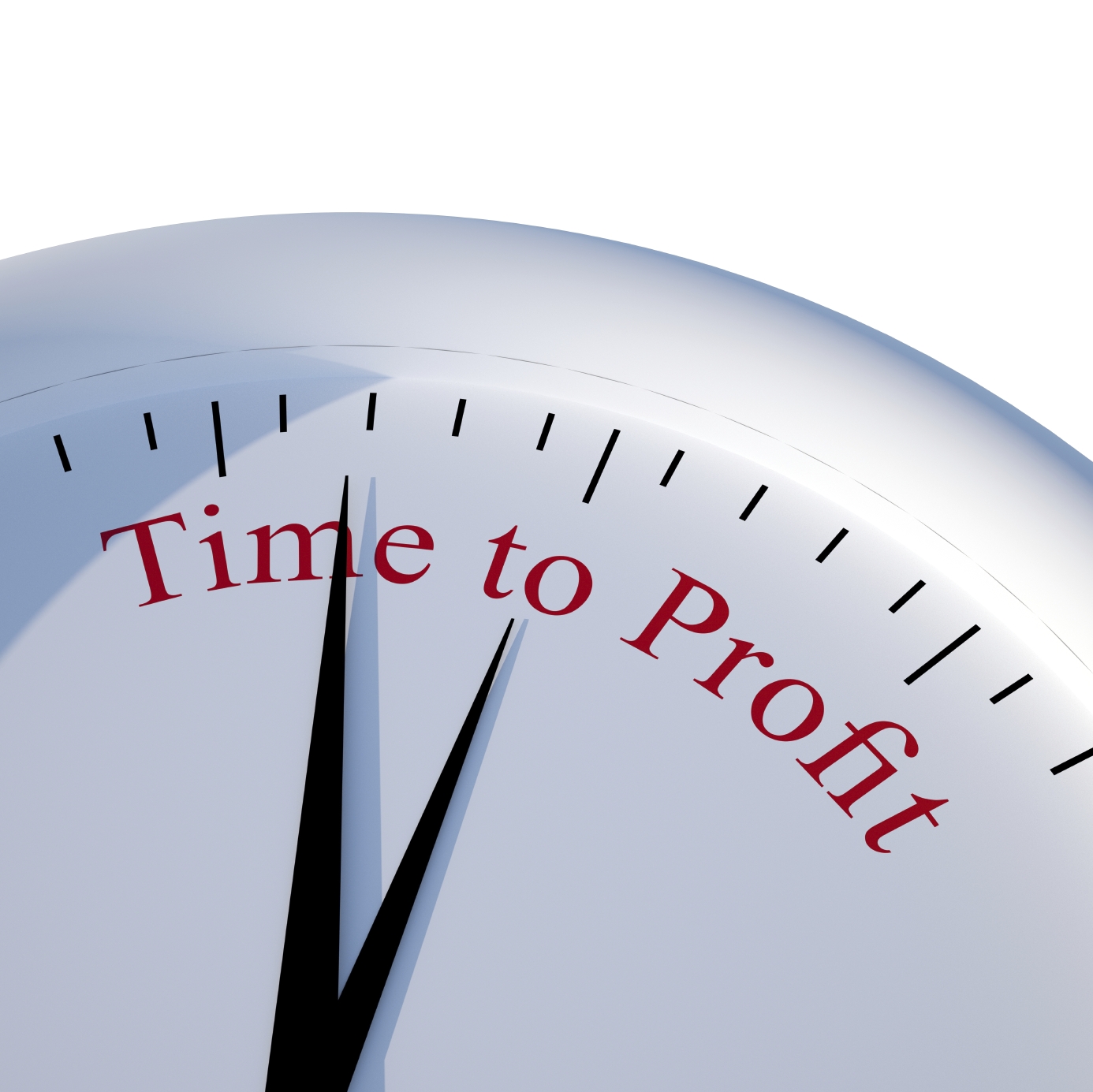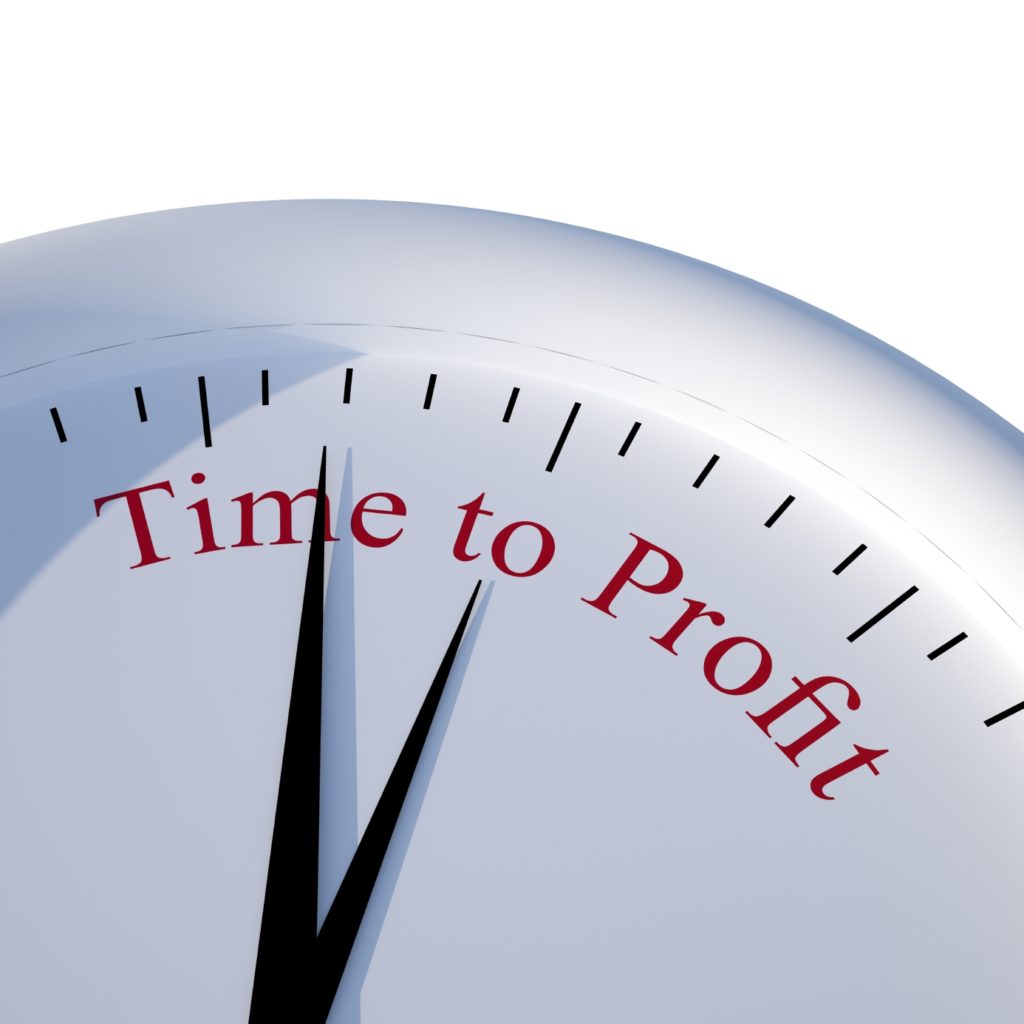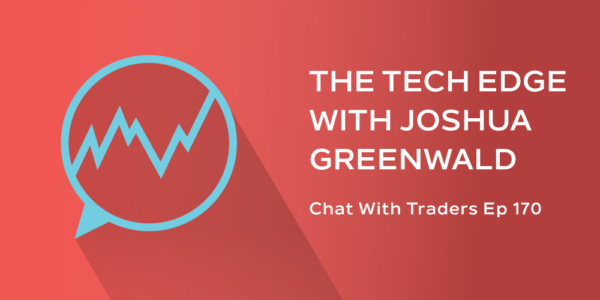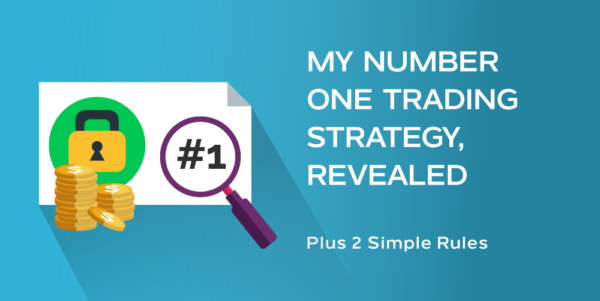

Getting yourself in the position to take profit is the goal for investors and the major reason to trade the markets.
Often, significant effort has been exerted in the selection and execution process for investing. The culmination of the research and planning phases can be rewarded by a profitable outcome.
Many traders find it very easy to get into the market and very difficult to exit. A number of factors influence that approach and some are based in a mistaken gambling psychology. It is often better to invest with a plan and methodology than gamble with the hope that results will fall in your favor.
That disciplined plan includes a selection process for identifying trading candidates and allocating an investment portfolio and risks appropriately. A major part of this is having a money management plan for both positive and negative outcomes. Know what you want to risk and what is a realistic goal based on what fits your trading personality.
The question of when to take profit varies based upon many factors and there is no one right answer. Investment strategies, time horizons and personal goals all impact an exit plan. Some don’t plan an exit at all and “let the winners ride” whatever that exactly means. For others, it makes sense to lock in gains and protect profitable positions.
Some investors may be looking for a small $100 profit on a trade to exit. This modest expectation can add up with a $100 a day profit, totaling nearly $25,000 in the course of a year. Others may have higher goals and will not act at all when their position is up that only $100. A risk/reward ratio developed prior to entry also impacts the execution of an exit strategy.
It seems that a lot of traders do not want to exit because of the fear of missing out. Sometimes investors seem almost willing to lose rather than missing that potential home run trade. For some being out of the market is as uncomfortable as losing money.
Experienced investors often talk about how important trade management is in their plan.
One of the most successful investors of all time, Fidelity’s Peter Lynch, measured investments in baseball terms as well. Singles were modest profits with a “ten bagger” was that elusive once in a lifetime profit. Frequent, small and consistent winners can often give you a better chance of being in position for that big winner.
Once in a profitable situation many possibilities exist to adjust risk. Many traders move their stop losses closer or to break even to lessen exposure. Others take some profit by exiting part of the position and let some of the trade continue for greater returns. When trading options hundreds of combinations of adjustments are possible to minimize further downside.
Often times the best that can be done is to lessen risk. Moving a stop or exiting some of the position is part of remaining disciplined. With the advances in electronic technology, opportunities are abundant for those with the skills and patience necessary. As hard as may seem at the time, there is no financial harm in missing out on an investment.
Strictly being right in the market is not what should motivate investors but unfortunately has a large emotional impact on trading. The most import result is a positive bottom line, making money. A focus on managing a successful trade to maximize the results is the final part of a trading plan. Efforts could be made to build upon reasonable financial expectations over time as trading confidence and success allows.
The answer of when to exit is personal. Traders have different account sizes and risk tolerances but all have the same goal to make money. Quite simply any profit is better than none and it is more money than you had before.










